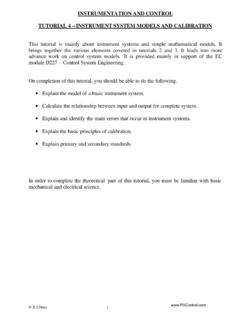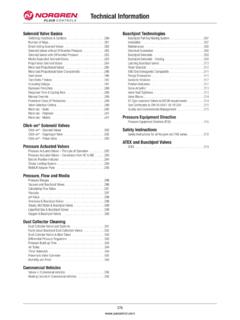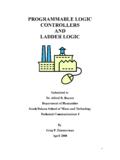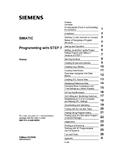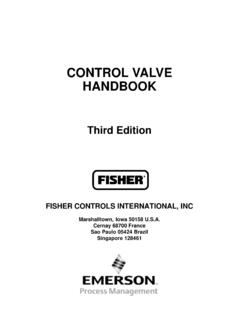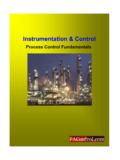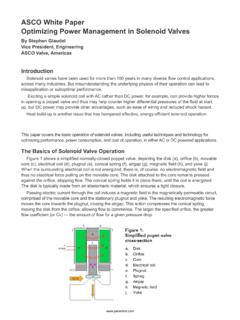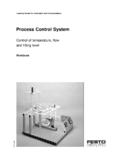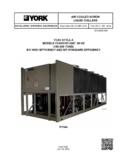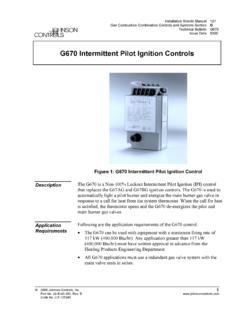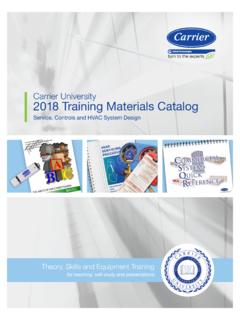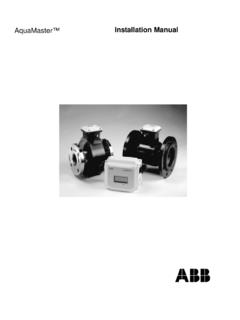Transcription of Electric Motor Controls - Process Control and …
1 1 Electric Motor CONTROLSOnce the proper Motor is selected, understanding the many various Control devices available andtheir uses and limitations becomes an important part related to reliable operation and protection ofthe Motor and the personnel using the Control TopicsThere are four major Motor Control topics or categories to consider. Each of these has severalsubcategories and sometimes the subcategories overlap to some extent. Certain pieces of motorcontrol equipment can accomplish multiple functions from each of the topics or four categories include:1) Starting the MotorDisconnecting MeansAcross the Line StartingReduced Voltage Starting2) Motor ProtectionOvercurrent ProtectionOverload ProtectionOther Protection (voltage, phase, etc)Environment3) Stopping the MotorCoastingElectrical BrakingMechanical Braking4) Motor Operational ControlSpeed ControlReversingJoggingSequence Control An understanding of each of these areas is necessary to effectively apply Motor controlprinciples and equipment to effectively operate and protect a STARTINGAll motors must have a Control device to start and stop the Motor called a Motor controller.
2 Motor ControllerA Motor controller is the actual device that energizes and de-energizes the circuit to the Motor sothat it can start and stop. Motor controllers may include some or all of the following Motor Control functions:Sstarting, stopping, over-current protection, overload protection, reversing, speedchanging, jogging, plugging, sequence Control , and pilot light range from simple to complex and can provide Control for one Motor ,groups of motors, or auxiliary equipment such as brakes, clutches, solenoids, heaters,or other StarterThe starting mechanism that energizes the circuit to an induction Motor is called the starter andmust supply the Motor with sufficient current to provide adequate starting torque under worst caseline voltage and load conditions when the Motor is energized.
3 There are several different types of equipment suitable for use as Motor starters but onlytwo types of starting methods for induction the Line Voltage StartingAcross the Line Starting of MotorsAcross the Line starting connects the Motor windings/terminals directly to the circuit voltage acrossthe line for a full voltage start . This is the simplest method of starting amotor. (And usually the least expensive). Motors connected across the line are capableof drawing full in-rush current anddeveloping maximum starting torque toaccelerate the load to speed in the shortestpossible time. All NEMA induction motors up to 200horsepower, and many larger ones, can withstand full voltage starts.
4 (The electricdistribution system or processing operation may not though, even if the Motor will).Across the Line Starters3 Figure 26. Manual StarterThere are two different types of common across the line starters including1. Manual Motor Starters2. Magnetic Motor StartersManual Motor StartersA manual Motor starter is package consisting of a horsepower rated switch with one set of contactsfor each phase and corresponding thermal overload devices to provide Motor overload protection. The main advantage of a manual Motor starter is lower cost than a magnetic Motor starterwith equivalent Motor protection but less Motor Control capability.
5 Manual Motor starters are often used for smaller motors - typically fractional horsepowermotors but the National Electrical Code allows their use up to 10 Horsepower. Since the switch contacts remain closed if power is removed from the circuit withoutoperating the switch, the Motor restarts when power is reapplied which can be a safetyconcern. They do not allow the use of remote Control or auxiliary Control equipment like a magneticstarter does. Magnetic Motor StartersA magnetic Motor starter is a package consisting of a contactor capable of opening and closing a set4 Figure 27. Magnetic Starterof contacts that energize and de-energize the circuit to the Motor along with additional motoroverload protection starters are used with larger motors (required above 10 horsepower) or wheregreater Motor Control is desired.
6 The main element of the magnetic Motor starter is the contactor, a set of contacts operated byan electromagnetic the coil causes the contacts (A) to close allowing large currents to beinitiated and interrupted by a smaller voltage Control Control voltage need not be the same as the Motor supply voltage and is often lowvoltage allowing start/stop Controls to be located remotely from the power circuit. Closing the Start button contact energizes the contactor coil. An auxiliary contact on thecontactor is wired to seal in the coil circuit. The contactor de-energizes if the Control circuitis interrupted, the Stop button is operated, or if power is lost.
7 The overload contacts are arranged so an overload trip on any phase will cause the contactorto open and de-energize all Voltage Starting of MotorsReduced Voltage Starting connects the Motor windings/terminals at lower than normal line voltageduring the initial starting period to reduce the inrush current when the Motor Reduced voltage starting may be required when:SThe current in-rush form the Motor starting adversely affects the voltage drop on theelectrical to reduce the mechanical starting shock on drive-lines and equipment whenthe Motor starts. Reducing the voltage reduces the current in-rush to the Motor and also reduces the startingtorque available when the Motor starts.
8 All NEMA induction motors can will accept reduced voltage starting however it may notprovide enough starting torque in some situations to drive certain specific the driven load or the power distribution system cannot accept a full voltage start, some type ofreduced voltage or "soft" starting scheme must be used. Typical reduced voltage starter types State (Electronic) Resistance Winding StartersReduced voltage starters can only be used where low starting torque is acceptable or a means existsto remove the load from the Motor or application before it is PROTECTIONM otor protection safeguards the Motor , the supply system and personnel from various operatingconditions of the driven load, the supply system or the Motor protection categories includeSOvercurrent ProtectionSOverload ProtectionSOther Types of Protection.
9 The National Electrical Code requires thatmotors and their conductors be protectedfrom both overcurrent and ProtectionOvercurrent protection interrupts the electrical circuit to the Motor upon excessive current demandon the supply system from either short circuits or ground faults. Overcurrent protection is required to protect personnel, the Motor branch circuit conductors, Control equipment, and Motor from these high currents. Overcurrent protection is usually provided in the form of fuses or circuit breakers. Thesedevices operate when a short circuit, ground fault or an extremely heavy overload overcurrent sources produce extremely large currents very 100 200 300 400 500 600 Full Load Amps (%)0 1 2 3 4 5 6 7 8 9 10 11 12 Time (Minutes) Motor Heating CurveMotor DamageAllowable Operation AreaAmperageTimeMotor Current DrawMotor Running CurrentStarting In-Rush CurrentOverload ProtectionOverload protection is installed in the Motor circuit and/or Motor to protect the Motor from damagefrom mechanical overload conditions when it is operating/running.
10 The effect of an overload is an excessive rise in temperature in the Motor windings due tocurrent higher than full load sized overloadprotection disconnects themotor from the power supplywhen the heat generated in themotor circuit or windingsapproaches a damaging levelfor any larger the overload, themore quickly the temperaturewill increase to a point that isdamaging to the insulation andlubrication of the common instantaneous type fuses and breakers, overload devices are designed toallow high currents to flow briefly in the Motor to allow for:CTypical Motor startingcurrents of 6 to 8 timesnormal running currentwhen duration overloadssuch as a slug of productgoing through a the Motor inlets and outlets arecovered by a blanket of lint or if abearing should begin to lock,excessive heating of the motorwindings will overload themotors insulation which coulddamage the overcurrent device will not react to this low level overload.
